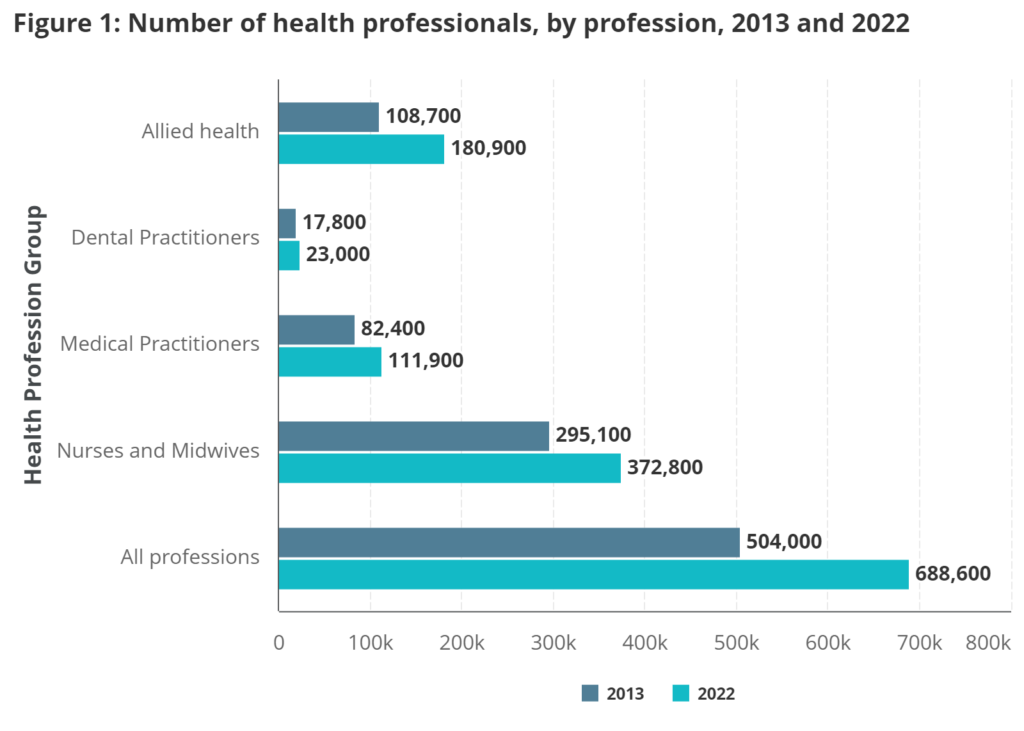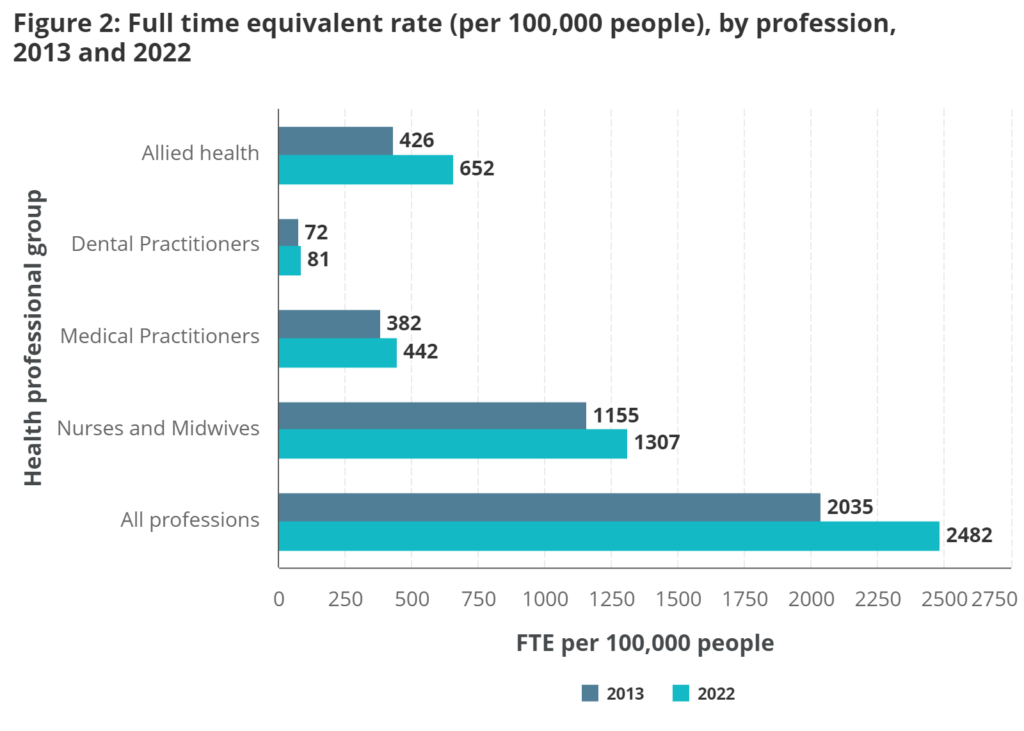Article Courtesy : https://www.aihw.gov.au/reports/workforce/health-workforce
The health workforce in Australia is large and diverse and includes a wide range of professionals and support staff working to provide healthcare services to the population. These include health practitioners registered with the Australian Health Practitioner Regulation Agency (Ahpra) as well as other health professionals and health support workers. Due to data limitations for the other professional groups, this page presents information on health practitioners registered with Ahpra.
The Australian Health Practitioner Regulation Agency
Ahpra is the statutory authority responsible for administering the National Registration and Accreditation Scheme (Ahpra 2023).
The current list of registered health professions includes Aboriginal and Torres Strait Islander health practitioners, chiropractors, Chinese medicine practitioners, medical radiation practitioners, occupational therapists, optometrists, osteopaths, paramedics, pharmacists, physiotherapists, podiatrists, psychologists, oral health therapists, dental hygienists, dental therapists, dental prosthetists, dentists, nurses, midwives, and medical practitioners.
The AIHW derives estimates of the Australian health workforce using the categories of 15 health professions from the Health Workforce Data Tool of the Australian Department of Health and Aged Care (Department of Health and Aged Care 2023a). Health professionals may be registered in more than one profession with Ahpra. All Ahpra numbers reported refer to registered health professionals who are employed in Australia and working in their registered profession. Ahpra-registered professionals who are not in the labour force are excluded.
Health workforce supply
Overview of registered health professionals
In 2022, the health workforce represented 5.0% of the total employed workforce in Australia. During that year, over 688,000 healthcare professionals were actively working in their respective registered professions. Nurses, account for 54% of total health industry employment (around 372,000 registered nurses in 2022) (Table 1).
Trends
On this page, health professions are categorised into 4 profession groups: Allied Health, Dental Practitioners, Medical Practitioners, and Nurses and Midwives. Between 2013 and 2022, the number of registered healthcare professionals actively working in their field in Australia increased by 37% (184,000 professionals) (Department of Health and Aged Care 2023a). Allied health professions had the highest total growth (67%) followed by Medical Practitioners (41%), Dental practitioners (29%) and Nurses and Midwives (26%) (Figure 1).
In the Australian Bureau of Statistics (ABS) Labour Force Survey over the same period, the Health Care and Social Assistance industry grew by almost 50%, to employ almost 2.1 million people in 2022. In comparison, the entire workforce grew by 21% to employ around 13.8 million people (ABS 2024).

The number of FTE health professionals per 100,000 population (FTE rate) has increased by 25% (from around 2,000 FTE per 100,000 in 2013 to 2,500 FTE in 2022) (Figure 2). Relative to the Australian population, allied health workers showed the highest growth in FTE rate from 2013 to 2022 (an increase of 226 FTE per 100,000 people) (Table 1). The inclusion of Paramedicine Practitioners as a new registered health profession (since 2019) has contributed to this increase, accounting for 92 FTE per 100,000 people in 2022.


